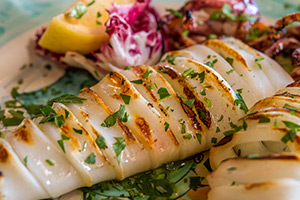All About Lean Fish

Easy to digest, lean fish lends itself to a variety of cooking methods.
A fish is considered "lean" when its flesh contains less than 2% of fat, making it the perfect item on your menu if you want to add maximum flavour to a healthy diet! We recommend steaming or poaching if you wish to maintain the low fat content of the fish. Here are some varieties available at your local Metro.
Turbot (Greenland Halibut)
Characteristics:
Greenland halibut is marketed as turbot to reduce confusion with its close relative, the Atlantic halibut. The turbot is however smaller than the Atlantic halibut and can be found in the Northern Hemisphere, Arctic and temperate waters. It’s fished in the wild and can measure more than a meter long and weigh more than 10 kg. Like others flatfishes, turbot swim sideways and have an asymmetrical shape. The turbot is appreciated in many countries for its firm, meaty and white flesh.
Culinary tips and advice
- Atlantic turbot can be served oven-baked, poached, grilled, sautéed, grilled, steamed or en papillotte
- If you’re new to turbot, simply grilling or poaching it is the best cooking method
- Salted turbot and marinated turbot are also available
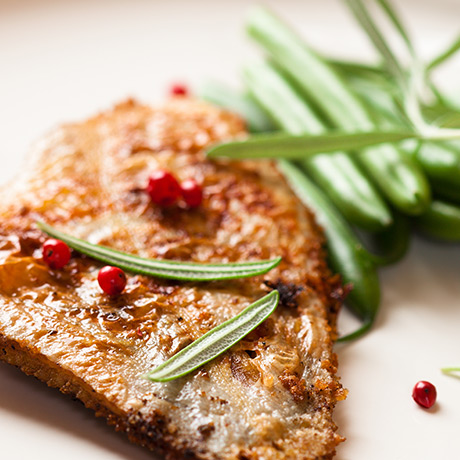
Availability
Your Metro fish counter stocks fresh and frozen turbot fillets year-round.
Nutritional value
The Atlantic turbot is excellent source of high-quality protein, rich in vitamins A and B12, and provides generous amounts of phosphorus, magnesium, potassium, calcium, selenium, iodine and iron. Salted and marinated turbot have a very high salt content and should be eaten in moderation.
Atlantic Turbot
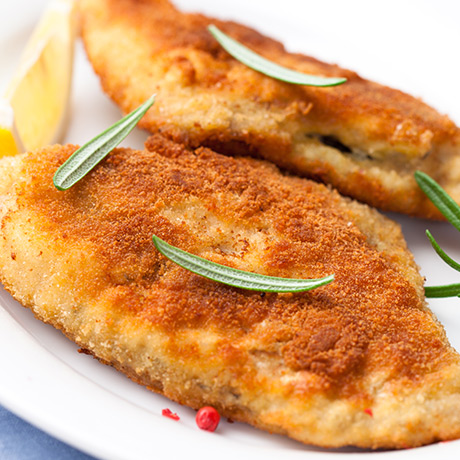
Atlantic turbot is a lean, white fish that is prized by gourmets.
Characteristics
Because it is fished in open waters far from shore, Atlantic turbot is often frozen at sea before being processed in Newfoundland or Nova Scotia.
Culinary tips and advice
You will find fresh, frozen or defrosted turbot steaks in your Metro fishmonger's counter.
- Turbot has no bones and lends itself to many recipes.
- It’s used to prepare sashimi, sushi and ceviche, but also makes it perfect for kebobs or fondue.
- No matter how it is prepared, turbot is always best with herbs and spices that bring out its flavour rather than mask it.
Availability
Your Metro fish expert recommends Atlantic Turbot from April through October even though it is available throughout the year.
Nutritional value
Atlantic Turbot is a good source of high-quality protein. It is rich in Vitamin A and niacin, and contains potassium, phosphorus, selenium, iodine and iron.
Barramundi
Characteristics:
Young barramundi grow in deep reservoirs filled with constantly-purified spring water to maximize taste and freshness. Barramundi is a fish of exceptional nutritional value that tastes like a cross between sablefish, walleye, swordfish and bass.
Culinary tips and advice
You will find fresh whole barramundi in your Metro fishmonger's display.
- We recommend letting your Metro fish expert prepare your fish because the gills of the barramundi are as sharp as razor blades.
- Its skin is very tough and translucent with round scales that have a tendency to fly all over and stick to surrounding surfaces.
- Barramundi is best cooked whole, rather than in fillets, because the thick skin that protects the flesh helps it retain moisture.
- The barramundi is excellent oven-baked, grilled, en papillote, or on the barbecue.
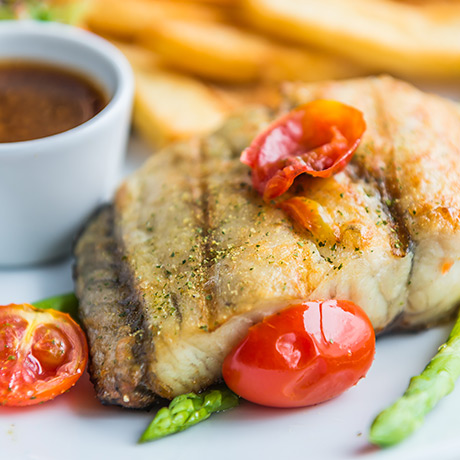
Nutritional value
The barramundi is an excellent source of high quality protein and provides a significant amount of omega-3 and omega-6 fatty acids.
Bass
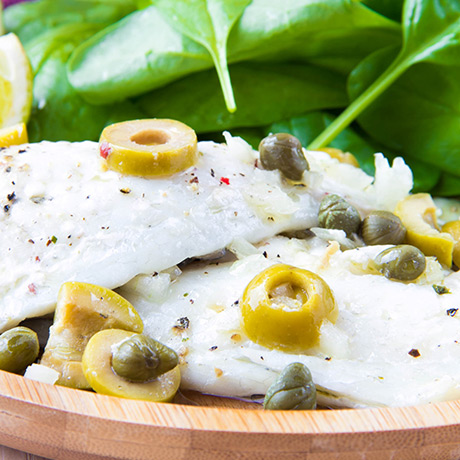
Characteristics
Bass’s white and flaky flesh is very tasty and lends itself to any type of cooking method. There are two types of bass. The smallmouth bass, which has a large number of small teeth in its jaw, measures about 30 cm and weighs a maximum of 1.5 kg. The largemouth bass is more robust and, though it is only slightly larger than its cousin, it gets its name from its distinctive mouth, which stretches all the way under its eyes. Bass are generally found in the muddy waters of lakes that can be polluted; the quality of the water in which the fish was caught should be considered before consuming bass.
Culinary tips and advice
You will find bass, fresh or in frozen fillets, in your Metro fish expert's display.
- Though it is of medium size, bass can easily be cooked whole without much difficulty.
- The larger specimens are easier to prepare in fillets.
- Just like trout, bass is excellent pan-fried in butter (meunière), steamed or deep-fried.
- It should be noted that the scales of bass are tenacious and scaling is made easier when the fish is soaked in boiling lemon water beforehand.
Nutritional value
Being lean, bass is very easy to digest. It’s high in protein and an excellent source of vitamins A and B12.
Pacific cod
Characteristics:
Pacific cod is similar to the Atlantic cod. Pacific cod typically measure 60 cm with a weight of 2.5 to 3.6 kg. This delicious white meat is lean, mild and flaky.
Culinary tips and advice
- You can buy cod fresh or frozen, whole or in fillets from your Metro fish expert.
- Cooking cod in a sauce enhances its taste, but whatever method you choose, you will love it.
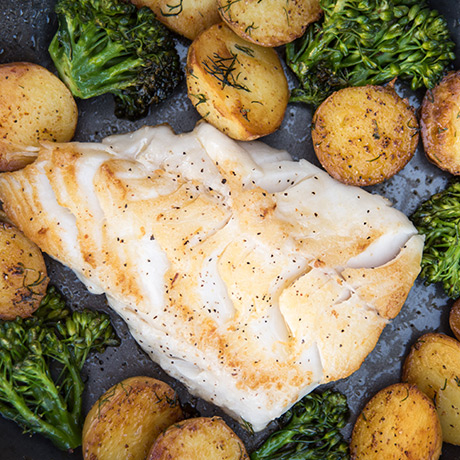
Availability
You can find cod year-round in your fishmonger's display.
Nutritional value
Fresh cod is very lean (1% of fat), very rich in high quality protein (18 %) and has very few calories. Fresh cod is rich in vitamins A and B and provides a generous amount of phosphorus, potassium, and calcium.
Dorade (Sea Bream)
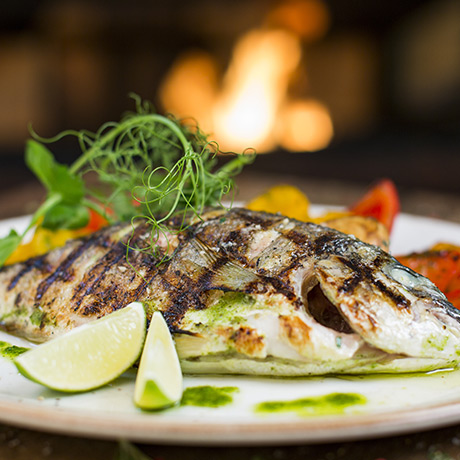
Characteristics
The dorade has a large head, an oval body and rounded flanks. The delicate white flesh of the dorade is succulent and juicy, and is suitable for a wide variety of dishes. The dorade is equally delicious in sashimi, ceviche or simply smoked. Dorade caviar is also highly prized.
Culinary tips and advice
You will find fresh whole dorade in your Metro fishmonger's display.
- It is important to scale the dorade as soon as possible. As the scales are abundant and sticky, we suggest that you leave this task to your Metro fish expert.
- The dorade has a lot of bones that should be removed with care in order to keep the flesh intact.
- Any technique can be used to prepare dorade; it can be fried, roasted, poached, grilled, oven-baked or steamed.
- The dorade can be substituted for snapper, sole or sea bass in any recipe.
Availability
Different varieties of dorade are available year-round at your local Metro fish counter.
Nutritional value
Dorade is an excellent source of high quality protein and provides a considerable amount of folic acid, vitamins B9 and B12, calcium, phosphorus, iron, magnesium and potassium.
Lake Victoria Perch
Characteristics:
Lake Victoria Perch is a carnivore than can grow up to two metres in length, making it one of the biggest fresh-water fish in the world. Perch has a firm yet delicate and flaky flesh with very few bones, which makes it the ideal choice to initiate children to eating fish.
Culinary tips and advice
- There is very little water in the flesh of the Lake Victoria perch; we recommend marinating the fillet about 30 minutes prior to cooking.
- It lends itself very well to any type of cooking method and is excellent grilled, oven-baked, steamed or pan-fried.
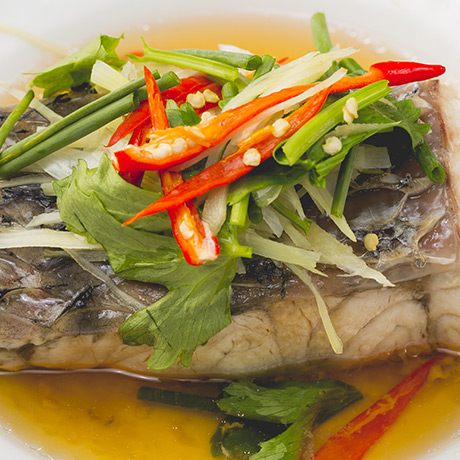
Availability
You can find cod, fresh or frozen, whole or in fillets, in your Metro fish expert's display, year-round.
Nutritional value
Lake Victoria perch is an excellent source of high quality protein, rich in vitamins A and B and provides a generous amount of phosphorus, potassium, and calcium. It has a very high concentration of omega-3 fatty acids.
Mahi Mahi
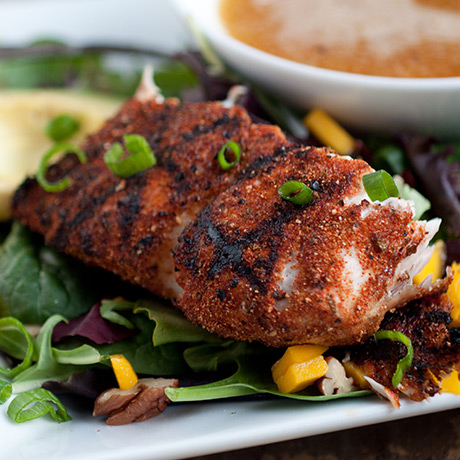
Characteristics
The male mahi-mahi has a blunt heavy-looking forehead, similar to that of the dolphin, the name often used in English, although the two have nothing else in common. It can grow as big as 22 kilograms and measure up to 2 metres. The mahimahi's lean, firm, slightly flaky, white to light pink flesh is very delicate and almost translucent and is best eaten very fresh, when it’s speckled with little red dots.
Culinary tips and advice
You will find fresh or frozen mahimahi fillets in your Metro fishmonger's display.
- Keep in mind that mahimahi deteriorates rapidly if it is left too long. We recommend that you remove it from its original packaging, rinse under cold water, pat dry, wrap in waxed paper and place in an airtight container in the coldest part of your refrigerator.
- Mahimahi is excellent pan-fried, poached, grilled, oven-baked, or steamed. It’s firm flesh turns opaque when cooked.
- It is a lean fish, excellent on the barbecue but it should be cooked quickly because, like all other lean fish, it loses moisture rapidly.
- In the islands, mahimahi is often served with lime, coconut milk, macadamia nuts, pineapple and other tropical fruit.
- For those who prefer an Asian touch, a few drops of soya sauce, teriyaki sauce, garlic and ginger will do the trick.
Nutritional value
Mahimahi is an excellent source of high-quality protein and rich in vitamins A and B12, niacin, selenium, potassium and vitamin B6.
Monkfish
Characteristics:
Monkfish is rarely sold whole, as it is the flesh of its tail that is tastiest and most popular. It’s a lean, firm, thick fish that has no bones with a pearly white, sweet-tasting flesh that is often compared to lobster or scallops.
Culinary tips and advice
- Fresh or frozen monkfish fillets are available to order at your Metro fishmonger.
- Monkfish can be prepared like lobster as well as in a number of other ways; it is excellent grilled, steamed, oven-baked, pan-fried, deep-fried and en papillote.
- Monkfish is often served with a sauce because the thickness of its flesh requires longer cooking times which, in turn, can dry it out.
- Monkfish fillets can be substituted for sole and turbot in any recipe.
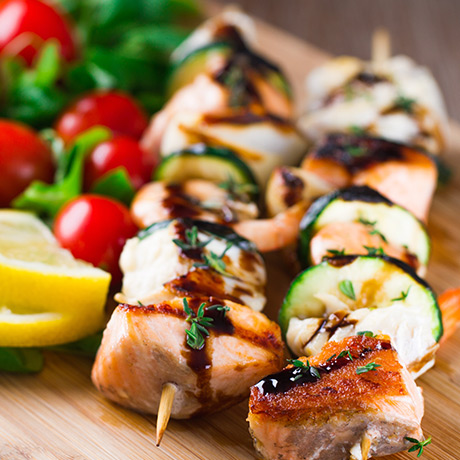
Storage life
Fresh fish should be cooked as soon as possible after purchase.
Nutritional value
Monkfish is an excellent source of vitamin D and very rich in selenium. It is also high in polyunsaturated fat and omega-3 acids.
Rockfish
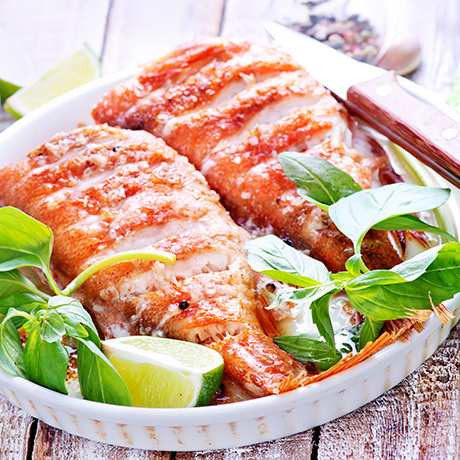
Characteristics
Rockfish have a short, laterally compressed body and length varies between species. The most harvested rockfish species for the market, the Pacific Ocean Perch can measure up to 50 cm long and weight from 0.5 to 1.4 kg. Rockfish grow slowly and do not reproduce until relatively late in life, some species can live up to 115 years.
Culinary tips and advice
You will find fresh rockfish fillets in your Metro fishmonger's display.
- The rockfish can just as easily be oven-baked, poached, prepared en papillote, sauteed, grilled, steamed, pan-seared, deep-fried and of course be used to make bouillabaisse.
- It can be cooked whole or in fillets.
Nutritional value
Rockfish are lean with a snowy white flaky flesh. It’s an excellent source of high-quality protein and is very rich in omega-3 and omega-6 fatty acids, potassium, iron and zinc.
Pinnacle (Whiting)
Characteristics:
Pinnacle is used mostly in making fish sticks and nuggets. This is mostly because its delicate lean flesh tends to crumble rapidly as it cooks.
Culinary tips and advice
Your Metro fish expert carries pinnacle fresh and whole.
- Pinnacle can be deep-fried, grilled, poached or pan-fried.
- Herbs and spices will enhance its flavour.

Availability
Pinnacle (Whiting) is available in your Metro fish expert's counter throughout the year.
Nutritional value
Low in calories, pinnacle (whiting) is an excellent source of high-quality protein. It is rich in vitamin A and contains a significant amount of phosphorus, potassium and selenium.
Sole
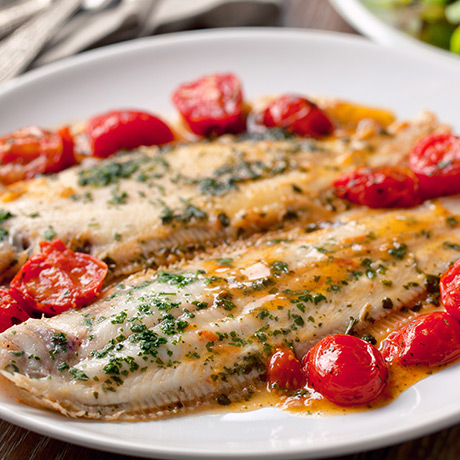
Characteristics
Sole is a common name use for flatfish belonging to several species, from the Atlantic and the Pacific Ocean. Like others flatfishes, sole swim sideways. Once cooked, the meat is pure white, lean and flaky with a mild flavour.
Culinary tips and advice
You will find sole fresh or frozen in fillets in your Metro fish counter.
- It can just as easily be oven-baked, grilled, poached, steamed, prepared en papillote, pan-fried or seared, sauteed or deep-fried.
- To bring out the full flavour of sole, fillets can be marinated in oil, lemon juice, white wine or soya sauce.
Availability
Sole is available year-round in your metro fishmonger's display.
Nutritional value
Sole is an excellent source of high-quality protein, rich in vitamin B and provides generous amounts of phosphorus, magnesium, zinc, selenium, iodine and iron.
Pickerel (Walleye, Doré)
Characteristics
Pickerel is a white fish. Unlike perch, it has two dorsal fins rather than one. The yellow walleye and the black walleye found in our waters can weigh two to five kilos.
Culinary tips and advice
You will find whole, fresh or frozen pickerel in your Metro fishmonger's display.
- Pickerel can be prepared many ways, it is excellent oven-baked, grilled, poached, steamed, en papillote, pan fried, sautéed or deep-fried.
- It is very versatile and, like all other delicate fish, the flavour of pickerel is best appreciated in simple recipes that do not mask its delicate taste and texture.
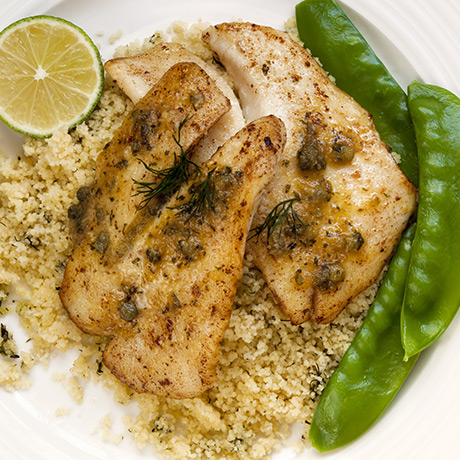
Availability
Your Metro fish expert has it on hand twelve months of the year.
Nutritional value
Pickerel is an excellent source of high quality protein and is rich in vitamins A and B12, niacin, calcium, phosphorus and potassium.











